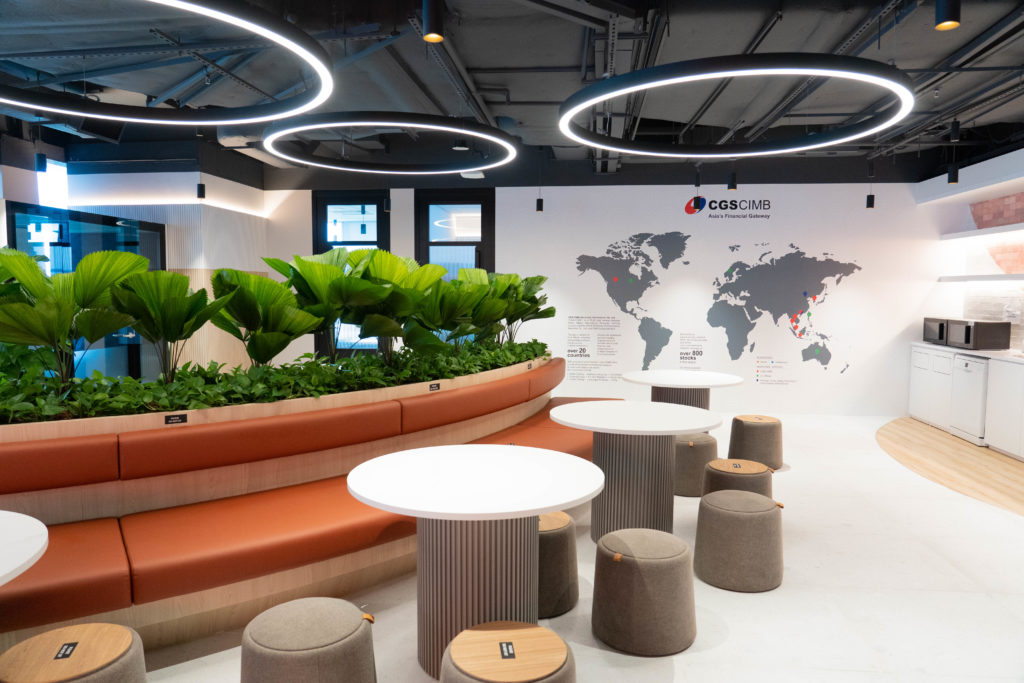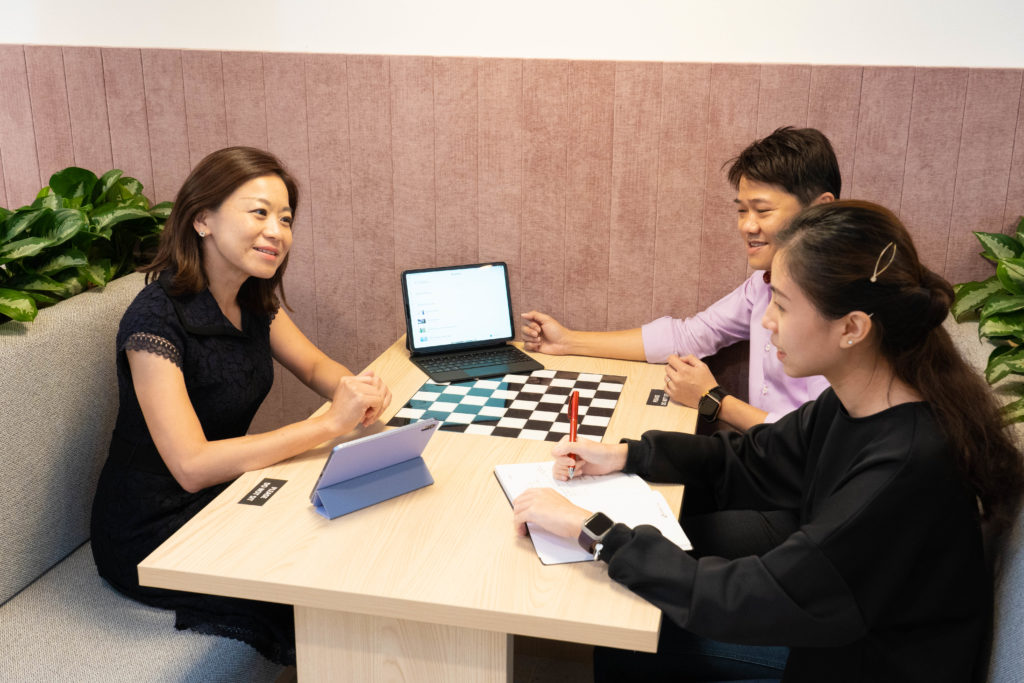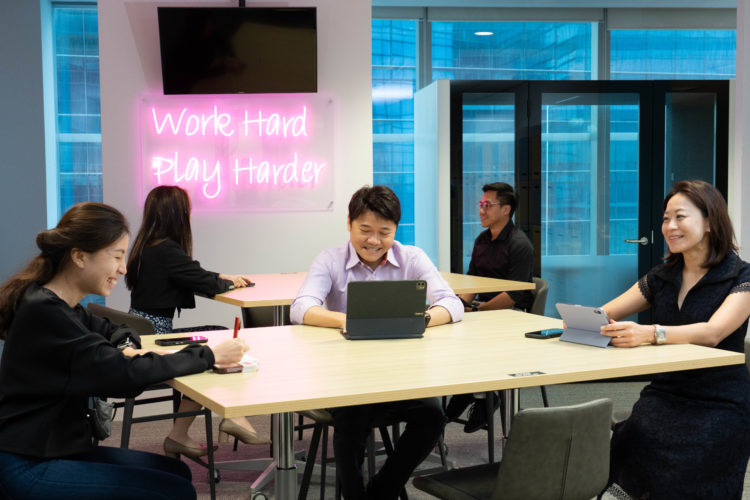
We continue our series on the hybrid workplace at FutureCIO. This time we are joined by Carol Fong, group CEO at CGS-CIMB Securities. Fong is responsible for the overall management and financial performance of the entire Group’s business.
CGS-CIMB has close to 2,080 employees group-wide from around the region, including 1,000 trade representatives. As Group CEO, Carol has oversight across CGS-CIMB with a presence in over 20 countries globally.
What are the conditions which define a hybrid workplace?

Carol Fong: A hybrid workplace essentially combines in-office work and remote work, offering flexibility and support to employees across all levels.
This model of work supports work-life balance and drives better levels of employee engagement through mixed collaboration. Globally, a survey by Owl Labs found that hybrid employees were 22% happier than workers in an onsite office environment.
Similarly, a 2021 Future of Work study by Accenture found that 83% of employees surveyed say they prefer a hybrid model in which they can work remotely for at least 25% of the time.
At CGS-CIMB, we are cognizant of the evolving labour landscape and the need for companies to adopt progressive human capital practices as part of their Employee Value Proposition. Our Hybrid Working Model has been formalised, with employees given the flexibility to work remotely to cater to their circumstances.
Leveraging our experience during the pandemic, we have also fine-tuned our policies which allows us to balance multiple objectives such as ensuring that the spirit of collaboration and productivity remains strong while having flexibility for all not to be physically present in the office.
Hybrid arrangements also allow us to attract the best talent, giving us a competitive edge in hiring as there is an expectation that organisations should have it in place to cater for the preferences of individual staff.
Furthermore, for employees with young families and or are living with senior citizens, the hybrid working model essentially offers some level of flexibility, allowing them the space to better plan and balance work and family expectations.
In Asia, what are the three primary drivers for a hybrid workplace?
Carol Fong: Culture, specifically the need for an environment which fosters mutual trust and personal responsibility. The key to a successful hybrid workplace is one in which there is a shared sense of responsibility, ownership and understanding.
- Managers must evolve from the traditional mindset of assessing based on physical presence or number of hours to one which emphasizes quality outcomes and deliverables
- The spirit of reciprocation from employees is equally paramount. Office essentials such as remaining responsive and availing oneself should continue to be underlying work practices, regardless of location.
The need for a set of well-defined policies and procedures that defines how hybrid working will work seamlessly in an organisation. This also takes into account the need for Facilities Management to ensure that the office space is managed effectively.
Strong wellbeing and people management policies to prevent burnout and “zoom fatigue” (video conferencing fatigue), etc, along with guidelines on output expectations and performance reviews.
Strong employee engagement to make hybrid working a win-win for both the employee and the organisation.
From a technology perspective, what are the critical components necessary for ensuring a safe/secure, productive and collaborative hybrid work environment?
Carol Fong: Hybrid work arrangements are highly dependent on the use of a variety of new technologies and collaboration tools that will enable both remote workers and in-office staff to work seamlessly.

Staff will need to be provided with digital skills training so they can make the most of the tools given to them.
When planning for our new office space at Marina Bay Financial Tower 2, we also take into account a post-pandemic future alongside the need for higher levels of cross-department collaboration to drive staff engagement.
To boost staff engagement across departments, we have in place the necessary infrastructure such as smart lockers for all staff, phone booths that also serve as work booths and plenty of collaboration spaces spread across two floors. These elements all come together to support a functional co-working and hybrid working space that is great for collaboration.
To ensure the overall health and wellbeing of all staff, we also offer monthly/bi-monthly e-talks on mental health and awareness, as well as encourage staff to adopt healthy living practices through constant messaging via a mix of in-house collaboration messaging tools (i.e. desktop screensavers, Teams Messenger groups and chatbots).
Who are the principal architects for creating and managing a hybrid workplace?
Carol Fong: The Management, Information Technology, Finance, Human Resources and Administration teams are by far the principal architects for creating, managing and maintaining a hybrid workplace that is also highly productive.

Going back to the point on planning for our new office space – it all takes the abovementioned departments to get together to brainstorm and collaborate on this major effort to ensure that everything goes well – from the start of the pandemic up until realisation.
As we are a trading firm, our IT Technical Support team offers robust 24/7 support for troubleshooting – for both our clients and staff needs.
What would derail the development of a hybrid workplace?
Carol Fong: These factors will derail the development of a hybrid workplace: inconsistent communication and lack of trust, as well as poor facilities and workplace management.
An organisation relies on its facilities to efficiently support its people, processes and locations. Even if the business reduces its scale of spaces, the office remains the engine of growth. Moving towards a post-pandemic future, we recognise the need for a more collaborative environment – both physically and virtually – to foster better communication and productivity. These aspects are highly dependent on trust, consistent communication and great facilities and workplace management.





